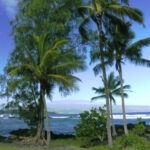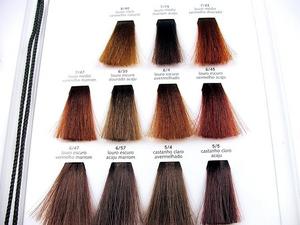Living in Hawaii has been a great experience, especially since I am a Kama`aina, or resident of Hawaii. In this article, I will try to demystify the questions and concerns about moving to Hawaii. I will expose you to insights normally only accessible to those living here, whether born and raised in Hawaii or to those who have moved here and now call Hawaii home. Hopefully you will find this information helpful and you will be able to come to Oahu, Hawaii with as little hesitation and anxiety as possible. I will be defining the most well used Hawaiian terms so that you will be knowledgeable when you come to visit or live and it will alleviate some of the confusion and help you to better assimilate to Oahu and help you to get around easier.
Let me tell you a little bit about me. I am of Hawaiian, Japanese, Filipino, Irish and Norwegian descent. Like so many Kama`aina, I am very “cosmopolitan” or a “poi dog”, which is in reference to a mixed breed dog , but we use that same phrase to describe those of mixed ethnic backgrounds. My parents were also born and raised on Oahu and our lineage goes back to the old days of Hawaii, Tahiti, Okinawa, Philippines and Europe. I am college educated (bachelors degree), married and have children. I am a voracious reader, love to write, scrapbook and make decorative cookies and cakes for special occasion for those I love.
In Hawaii, it’s important to know the “local lingo” or local terms when referring to almost everything. Since we are discussing specifically Oahu, then I will use terms that may or may not be exclusive to the island of Oahu but they are terms that are extensively used on Oahu. To successfully navigate your way through the island, it’s important to know these terms.
Basic directions of North – South – East – West, it’s important to know that most do not use these terms. I will list them for you:
North – Called “North Shore” and reflects the communities named Pupukea, Haleiwa, and Sunset Point to name a few. Also the home to the infamous “Pipeline” surf spot.
South – Called “Town” or “South Shore”, home to the urban area of the island. Home to the state capitol, I`olani Palace (only palace in the U.S.), the Honolulu International Airport and the Arizona Memorial. If you ask a local exactly where the south shore starts and ends, you will probably get various answers. The more prevalent belief is that the zip codes of Honolulu located between Pearl Harbor and Kaimuki are considered to be “south shore” or “town. But if you Google “south side of Oahu, HI”, you will receive answers that include parts of the West side of the island (namely Kalaeloa Point and Ewa Beach).
East – Called “Koko Head”, named after the extinct dome volcano in that area. This area is an affluent area of upper middle class to wealthy families. Primarily consisting of the areas: Kahala, Aina Haina, Kuliouou, Niu Valley, and Hawaii Kai.
West – called the “Leeward side” which encompasses the fastest growing communities on the entire island. Another frame of reference to the West side is “Ewa Beach. When using either “Leeward side” or “Ewa Beach”, people residing here will know exactly what part of the island you are referring to.
Then there’s the Windward Side – Located on the NE side of Oahu and encompasses a large section of the island from Waimanalo to Kahuku. Some say that the Windward side runs from Waimanalo to Kaaawa. But notice the island of Oahu is somewhat shaped uniquely at an angle. That’s why there is no definite South shore and Windward shore to describe.
Hapa – From Hawaiian origins. As defined in the New Pocket Hawaiian Dictionary1, hapa means:
“1.Portion, fragment, part; to be a portion, less. (Eng., half.) 2. Of mixed blood; person of mixed blood.” Most often used when referring to persons of equal Asian and Caucasian ethnic background. For example, people traditionally would call a person who is 50% Asian and 50% Caucasian a “hapa”. However, in more recent times, this “hapa” phrase has come to describe anyone who is 50/50 of any ethnic background.
Pau – means to be finished with anything and can be used to describe completion of any activity from eating to reading to homework. Most commonly used in a question such as “Are you pau?” or in a statement like “I am pau.” What is being said is “are you done/finished?” and “I am done/finished.” Pronounced like the word “Pow” as in “Powwow”.
Mahalo – “Thank you”. A courteous reply to requested service, an answered question, or otherwise. Many times “Mahalo” is on the trash receptacles and therefore, tourists assume it means “Trash”. Mahalo is on the trash receptacles because it’s the states way of thanking you in advance for the anticipated courtesy of throwing away trash in the trash receptacles and not littering. If you ask a local (mainly teenagers to early 20’s) what “Mahalo” means, they may tell you it means “trash” just to play with you.
Mauka – Means “inland”1 . From the word Uka meaning “Inland, upland, toward the mountain, shore, uplands…”1.Used when referring to direction and used in such media as the traffic reports on the news and radio. “Accident mauka lane” means there’s an accident in the far most mountainside lane. Depends on which direction on the road, highway or freeway you are traveling. How do you determine which side is Mauka when traveling? Look forward (or backward) and whichever side the mountain range is on, is the “mauka” side.
Makai – defines it as ” on the seaside, toward the sea, in the direction of the sea…”1. Derivative of the word “Kai” meaning “Sea, sea water” 1. Generally used when referring to directional instructions and used as a visual (Mauka also) to help clarify which way to go. “Stay in the far makai lane on H1” means to stay in the freeway lane that is closest to the ocean side of the road. Like Mauka, using Makai would depend on which direction you are traveling to or from. Look forward or backward, and which ever side the ocean is on would be considered the “makai” side.
The best way to simplify the use of mauka and makai would be to compare it to using right or left as directional references. For example, when facing a class of children. The teachers right hand will be opposite the children’s right hand because they are facing each other. So for the teacher to show the children how to place their right hand over their heart, the teacher would need to use the left hand while facing them. Or could turn around and face the same direction as the children and use the right hand. I hope that makes sense.
“Kona Winds” – Winds that blow southerly up the island chain. In reference to the town of Kona, Hawaii, which is located on the southern most (and largest) island in the chain which bears the name of the state as it’s island name…aka: The Big Island of Hawaii. When we have Kona winds, the air is warmer and often will contain the VOG, or volcanic smog-like particles in the air. When Kona winds are present, even the airlines have to land in an alternate way. Actually, This is the most picturesque way of landing an airplane because oftentimes the airlines will have to pass the southerly coast line of Oahu which provides an excellent view of Waikiki Beach, Ala Moana Shopping Center and the Airport.
VOG – a portmanteau (or word created from combining other words) created from combining the words volcanic ash and smog. VOG is created when volcanic sulfuric reacts to oxygen, moisture in the air and sunlight2. VOG is especially dangerous for those with chronic respiratory issues and may aggravate the throat and sinus areas. Breathing in lots of VOG can cause symptoms similar to a cold: runny nose, post nasal drip, sore throat, sinus pain that can possibly lead to catching a virus or cold. I know this from personal experience.
These are the basic local terms that you should familiarize yourself with prior to coming to the islands. Knowing these terms can help you have a more enjoyable visit or move to Hawaii. E Komo Mai, a warm welcome to visitors to our state means a pleasant invitation to come and visit.
References and citations
1. Pukui, Mary Kawena, Ebert, Samuel H, with Mookini, Esther T., Nishizawa, Yu Mapuana. New Pocket Hawaiian Dictionary: With a Concise Grammar and Given Names in Hawaiian. Honolulu: University of Hawaii Press, 1992.
2. Wikipedia contributors. Vog. Wikipedia, The Free Encyclopedia. January 28, 2008, 03:27 UTC. Available at: http://en.wikipedia.org/w/index.php?title=Vog&oldid;=187395446. Accessed March 7, 2008.



